Totino’s pizza offers a convenient and delicious meal solution. Proper baking ensures a crispy crust and perfectly melted cheese. Follow these steps for a perfect pizza every time.
Overview of Totino’s Pizza
Totino’s Pizza is a popular frozen pizza brand offering convenience and flavor. Known for its crispy crust and savory toppings, it’s a budget-friendly option for quick meals. Available in various sizes, including Party Pizza and Pizza Rolls, Totino’s caters to different preferences and portion needs. The pizza is designed to be baked at home, providing a fresh, oven-cooked taste without the hassle of homemade dough. Its compact design and straightforward baking process make it a favorite for snacks, gatherings, or family dinners. Customizable with additional toppings, Totino’s pizza is a versatile and satisfying choice for pizza lovers of all ages.
Importance of Following Baking Instructions
Following Totino’s pizza baking instructions ensures a perfectly cooked crust and evenly melted cheese. Proper temperature and timing prevent a soggy crust or undercooked toppings, guaranteeing a crispy texture and flavorful result. Deviating from instructions can lead to uneven cooking or food safety issues. Preheating the oven and using the right baking surface, like a sheet or stone, are crucial for optimal results. Adhering to guidelines ensures a safe and enjoyable dining experience, delivering the best taste and texture as intended by the manufacturer. Consistency and deliciousness are achieved when instructions are followed accurately.
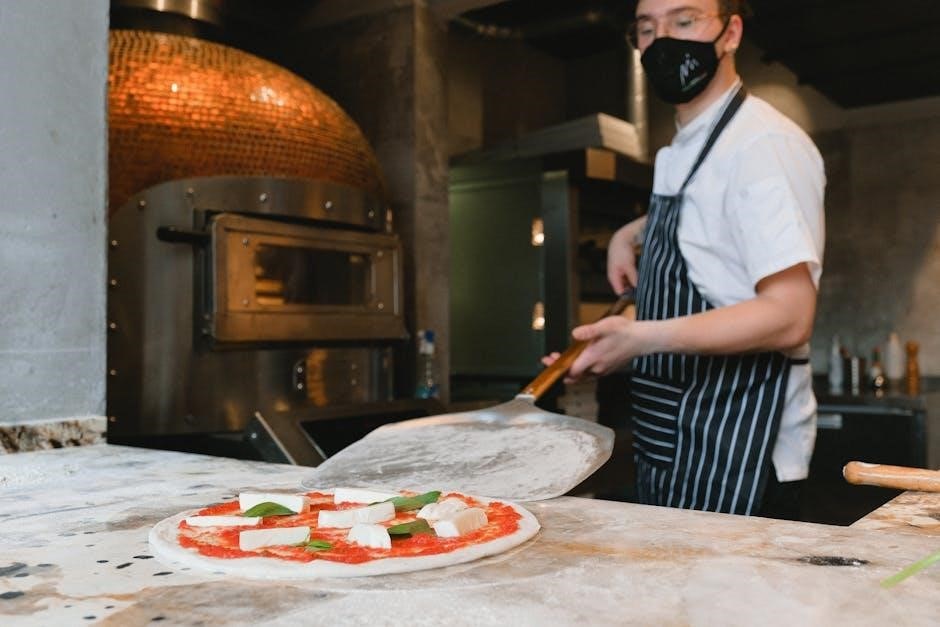
Preheating the Oven
Preheating the oven ensures even cooking and a crispy crust. Set the temperature to 450°F (232°C) and wait for it to reach the desired heat before baking.
Recommended Baking Temperature
The ideal temperature for baking Totino’s pizza is 450°F (232°C). This high heat ensures the crust cooks evenly and becomes crispy while melting the cheese perfectly. Preheating the oven to this temperature is crucial for achieving the best results. Lower temperatures may result in a softer crust, while higher temperatures could cause burning. Always refer to the packaging for specific instructions, as some variations might require slightly different temperatures. Proper temperature control is key to a delicious, evenly baked pizza.
Why Preheating is Crucial
Preheating the oven is essential for achieving a crispy crust and evenly cooked pizza. It ensures the oven reaches a consistent temperature, preventing hot spots that can cause uneven cooking. A preheated oven immediately starts cooking the pizza, giving the crust a golden-brown finish. Without preheating, the pizza may cook too slowly, leading to a soggy texture. Always preheat the oven to the recommended temperature before placing the pizza inside for the best results.
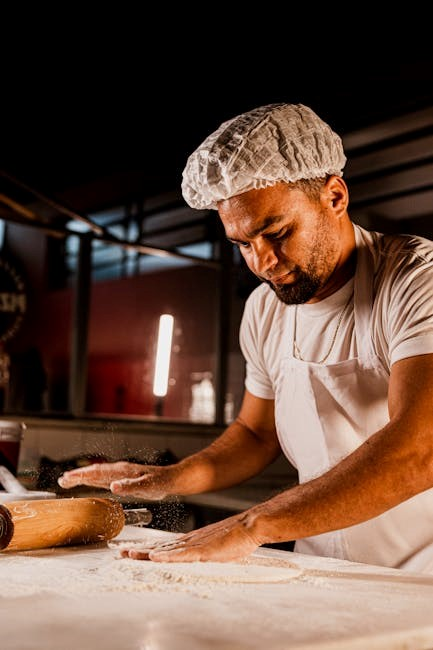
Removing the Pizza from Packaging
Carefully remove the pizza from its packaging and discard any plastic or cardboard inserts. Handle the pizza gently to avoid damaging the crust or toppings before baking.
How to Safely Unpackage the Pizza
Carefully open the packaging, ensuring the pizza remains intact. Use a sharp object or your hands to tear along the designated edge. Take note of any plastic or cardboard inserts that may be securing the pizza and remove them gently. Avoid touching sharp edges or frozen surfaces to prevent injury. Once unpackaged, inspect the pizza for any damage or tears. Proper handling ensures the pizza is ready for baking without issues. This step is crucial for maintaining the pizza’s shape and preventing accidental damage before cooking. Always handle frozen items with care to avoid accidents.
Discarding Plastic and Cardboard Inserts
After removing the pizza from its packaging, carefully discard all plastic and cardboard inserts. These materials are not intended for baking and could pose a fire hazard if left in the oven. Ensure all packaging components, including plastic wraps, cardboard sleeves, and inserts, are properly disposed of. This step prevents any interference with the cooking process and ensures the pizza cooks evenly. Always double-check the packaging to confirm no inserts remain before placing the pizza in the oven. Proper disposal maintains safety and promotes optimal baking results.
Choosing the Right Baking Surface
Choosing the right baking surface ensures even cooking and crispiness. A baking sheet distributes heat evenly, while a pizza stone enhances crust crispiness. Placing directly on the rack offers a crispy bottom.
Using a Baking Sheet
A baking sheet is ideal for baking Totino’s pizza, ensuring even heat distribution and a crispy crust. Place the pizza in the center of the sheet, leaving space for air circulation. Lightly grease the sheet if desired for easier removal. This method accommodates both crispy and softer crust preferences, providing consistent results. It’s a versatile option for achieving perfectly cooked pizza every time.
Benefits of a Pizza Stone
A pizza stone enhances the baking process by absorbing moisture, resulting in a crispier crust. It distributes heat evenly, ensuring the pizza cooks uniformly. Preheating the stone with the oven maximizes its effectiveness. Using a pizza stone can elevate the texture and flavor of Totino’s pizza, making it a worthwhile investment for pizza enthusiasts. It’s a simple yet effective tool for achieving professional-quality results at home.
Direct Rack Placement
Placing the pizza directly on the oven rack allows air to circulate beneath the crust, promoting crispiness. This method prevents sogginess and ensures the pizza cooks evenly. For best results, ensure the rack is centered to avoid hot spots. Direct rack placement is ideal for achieving a well-cooked crust without the need for additional baking surfaces. It’s a simple yet effective technique recommended for Totino’s pizza to enhance texture and flavor.
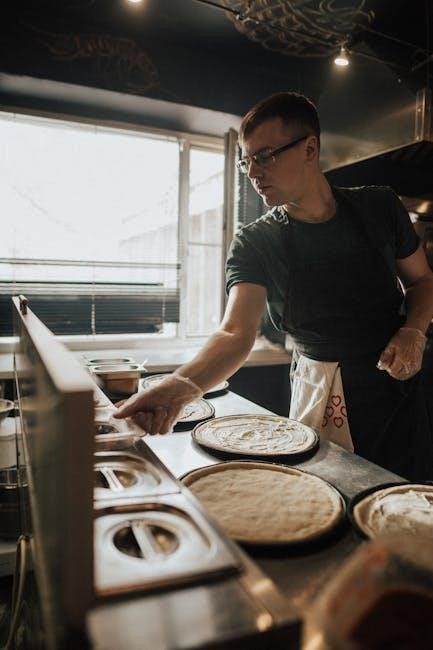
Placing the Pizza in the Oven
Position the pizza on the center rack for even cooking. Ensure the oven is preheated and the pizza is placed on a baking sheet or directly on the rack for optimal results.
Positioning on the Baking Sheet
Place the pizza in the center of a preheated baking sheet, ensuring it lies flat. Leave space around the pizza for air circulation to promote even cooking. The baking sheet helps distribute heat evenly, ensuring a crispy crust. For a crisper crust, you can lightly spray the sheet with cooking spray before placing the pizza. Avoid overcrowding the sheet, as this can prevent proper cooking. Once positioned, the pizza is ready to be baked to perfection, following the recommended temperature and time guidelines for optimal results.
Center Rack Placement for Even Cooking
Placing the pizza on the center rack ensures even heat distribution and consistent cooking; This position allows air to circulate freely around the pizza, promoting a crispy crust and evenly melted cheese. Avoid overcrowding the oven, as this can disrupt airflow and lead to uneven cooking. Always follow the recommended baking time and temperature guidelines for the best results. Proper rack placement is key to achieving a perfectly cooked Totino’s pizza with a golden-brown crust and flavorful toppings. This simple step enhances both texture and taste.

Baking the Pizza
Bake the pizza at 375°F for 15-20 minutes, or until the crust is golden and cheese is bubbly. Ensure even cooking for a crispy result.
Recommended Baking Time
The ideal baking time for Totino’s Pizza is 15-20 minutes at 375°F. Small pizzas may require 12-14 minutes, while larger ones might need up to 20 minutes. Ensure the crust is golden and the cheese is bubbly. For a crisper crust, bake for an additional 2-3 minutes. Keep an eye on the pizza during the last few minutes to avoid overcooking. Proper timing ensures a perfectly cooked pizza with a crispy crust and evenly melted cheese. Adjust as needed based on oven performance and personal preference for crispiness.
Baking Temperature and Time
Preheat your oven to 450°F (232°C) for optimal results. Bake Totino’s Pizza for 15-20 minutes, or until the crust is golden brown and the cheese is melted and bubbly. For smaller pizzas, 12-14 minutes may suffice, while larger ones might require up to 20 minutes. Ensure the pizza is placed on the center rack for even cooking. Keep an eye on it during the final minutes to prevent overcooking. Proper temperature and timing are crucial for a crispy crust and evenly cooked toppings. Adjust the time slightly if needed, based on oven performance and pizza size.
Direct vs. Indirect Baking
Direct baking involves placing the pizza directly on the oven rack, promoting a crispy crust. Indirect baking uses a baking sheet, which can help prevent mess and ensure even cooking. For a crisper crust, direct baking is recommended, while indirect baking is ideal for softer crusts. To enhance direct baking, consider using a preheated pizza stone on the rack for better heat distribution. Both methods yield delicious results, so choose based on your crust preference. Always ensure proper air circulation around the pizza for optimal cooking. Adjustments may be needed based on oven performance and pizza size.
Ensuring Even Cooking
To achieve even cooking, place the pizza on the center rack of a preheated oven. Use a baking sheet or pizza stone to distribute heat uniformly. Ensure sufficient space around the pizza for air circulation, which prevents hot spots. Rotate the pizza halfway through baking for consistent results. Avoid overcrowding, as this can disrupt airflow. For optimal evenness, consider using a pizza stone, which absorbs moisture and distributes heat evenly. These steps ensure a perfectly cooked crust and evenly melted toppings, avoiding undercooked or burnt areas. Proper placement and rotation are key to a delicious, uniform finish.
Visual Cues for Doneness
The pizza is done when the crust is golden brown, and the cheese is melted and bubbly. Check for a crispy edge and a fully cooked center. Ensure the crust is golden brown, and the edges are slightly crispy. The cheese should be fully melted and bubbly, with no raw or undercooked spots. Avoid overcooking, as the crust may darken excessively. Use these visual cues to determine doneness, ensuring a perfectly cooked pizza with a crispy crust and evenly melted toppings. Properly baked pizza will have a golden, even appearance with no soft or pale areas remaining.
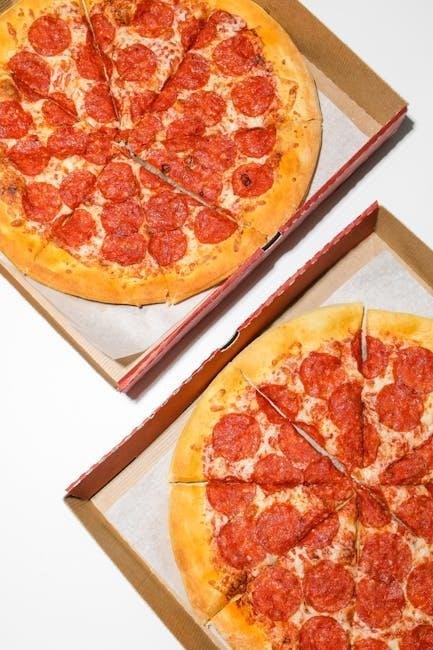
Cooling the Pizza
Let the pizza cool for a few minutes to avoid burns and ensure the cheese sets properly. Cooling helps maintain a crispy crust and prevents sogginess.
Why Cooling is Important
Cooling the pizza allows the cheese to set, preventing it from oozing or becoming too runny. It also helps the crust retain its crispiness and prevents sogginess. Letting the pizza cool slightly ensures a safer eating experience, as overly hot cheese and sauce can cause burns. Additionally, cooling helps the flavors meld together, enhancing the overall taste. Proper cooling is essential for maintaining the pizza’s texture and structure, making it more enjoyable to eat. It’s a simple step that makes a big difference in the final result of your Totino’s pizza.
Recommended Cooling Time
A cooling time of 2-3 minutes is ideal for Totino’s pizza. This brief period allows the cheese to set and the crust to retain crispiness. Excessive cooling can make the pizza lose its warmth and flavor. After baking, remove the pizza from the oven and let it rest on a cutting board or plate. This short wait ensures a perfect balance of texture and temperature, making the pizza ready to slice and serve safely and enjoyably. Patience for these few minutes will enhance your dining experience.
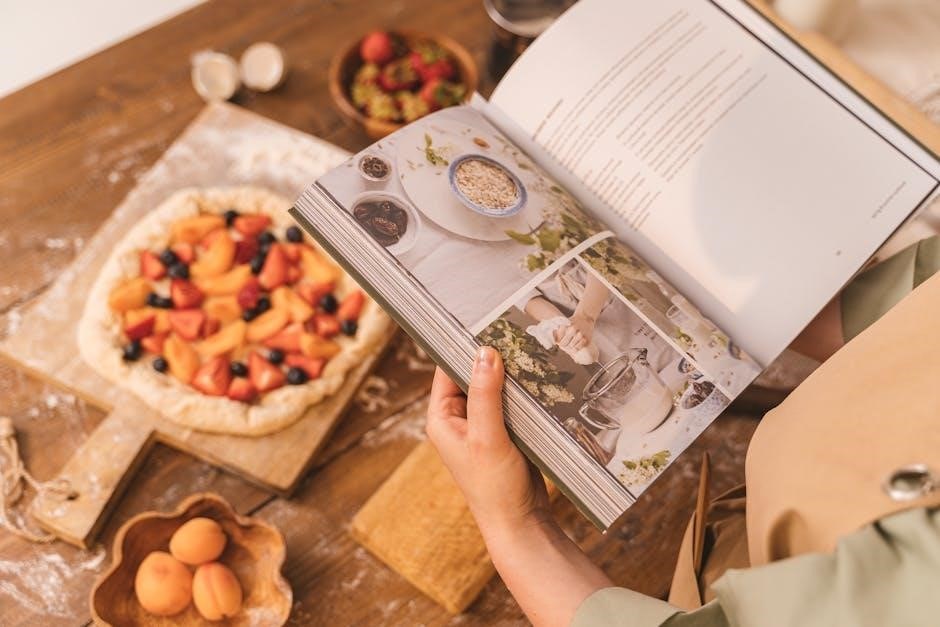
Serving the Pizza
Allow the pizza to cool slightly before slicing. Use a pizza cutter or sharp knife for even cuts. Serve immediately for the best flavor and texture experience.
How to Slice the Pizza Safely
Let the pizza cool for a few minutes to avoid burns. Use a sharp knife or pizza cutter on a stable surface. Cut away from your body to prevent accidents. Slice evenly for consistent portions. Serve immediately for the best flavor. Handle hot cheese with care to avoid burns. Always use caution when handling sharp objects and hot food for a safe and enjoyable experience. Proper slicing ensures everyone can enjoy their meal safely and efficiently.
Serving Suggestions
Serve Totino’s pizza hot with your favorite dipping sauce, like marinara or ranch, for extra flavor. Pair it with a fresh green salad or garlic knots for a complete meal. For a snack, enjoy it on its own or with a side of chips. Customize each slice with toppings like pepperoni, olives, or herbs for personal preference. Perfect for gatherings, parties, or a quick family dinner, Totino’s pizza is a versatile and crowd-pleasing option that fits any occasion. Elevate your meal with these simple yet delicious ideas for a satisfying experience.
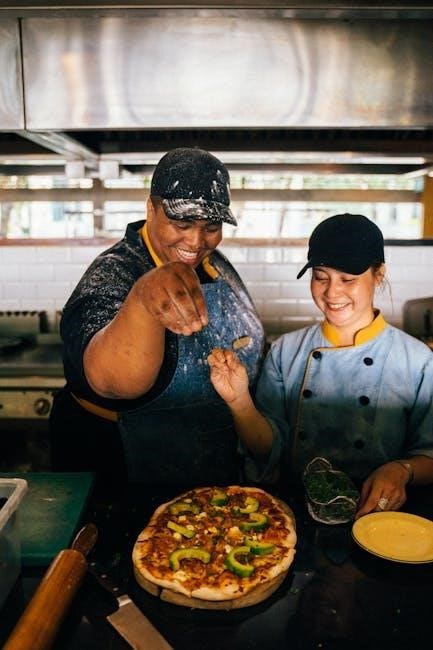
Tips for a Crispy Crust
Preheat the oven fully and bake directly on the rack for a golden, crispy crust. Using a pizza stone enhances crispiness. Avoid overcrowding the oven for best results.
Extending Baking Time
Extending the baking time can enhance crispiness but requires careful monitoring. Add 2-3 minutes for a crisper crust, ensuring the cheese doesn’t overbrown. A pizza stone helps distribute heat evenly, promoting a golden-brown crust without sogginess. Avoid overextending, as it may lead to a burnt crust. Check the pizza’s edges and center for even cooking. Let it cool slightly before serving to retain crispiness. This method ensures a perfectly cooked, flavorful pizza with a satisfying texture. Always follow package guidelines and adjust based on personal preference for the best results.
Direct Rack Baking
For a crisper crust, place the Totino’s pizza directly on the oven rack without a baking sheet. This method allows air to circulate evenly, enhancing crispiness. Bake at 450°F for 12-14 minutes or until the crust is golden. Monitor closely to avoid burns. Direct rack baking prevents sogginess and ensures a firmer base. Remove carefully with oven mitts or tongs. Let cool briefly before slicing. This technique is ideal for those seeking a classic, crispy pizza texture without additional tools. Always follow package instructions for optimal results. Perfect for achieving a restaurant-quality crust at home.
Adding Your Own Toppings
Add fresh toppings like vegetables, meats, or herbs to customize your Totino’s pizza. Ensure toppings are pre-cooked and distributed evenly for balanced flavor and texture.
When to Add Toppings
Add toppings right before baking for optimal flavor and texture. Pre-cook hearty toppings like meats or vegetables to ensure they’re fully cooked. Sprinkle toppings evenly across the pizza to avoid overcrowding. Lighter toppings like herbs or cheese can be added during the last few minutes of baking to prevent burning. For extra crispiness, consider adding a pat of butter or garlic powder before baking. This enhances flavor and texture, making your Totino’s pizza uniquely delicious.
Popular Topping Combinations
Enhance your Totino’s pizza with classic topping combinations. Pepperoni and cheese is a timeless favorite, offering a balance of spicy and creamy. For meat lovers, add pepperoni, sausage, and bacon for a hearty, savory flavor. Veggie enthusiasts can opt for mushrooms, onions, and bell peppers for a fresh twist. A deluxe combo might include pepperoni, mushrooms, and olives. Experiment with garlic powder or butter for added richness. These combinations ensure a flavorful and satisfying meal, making your Totino’s pizza a delightful experience every time.
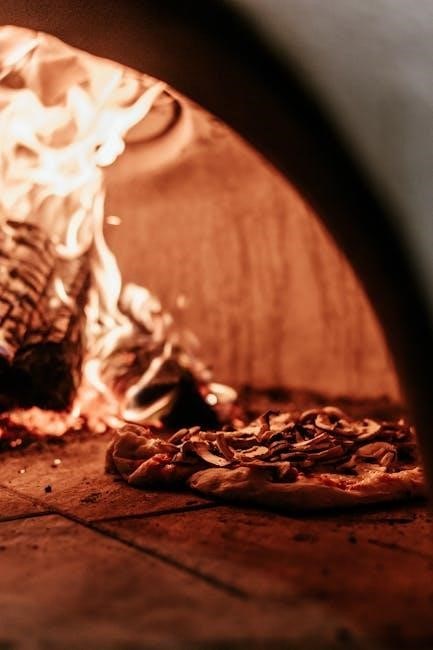
Using a Pizza Stone
Using a pizza stone enhances Totino’s pizza baking by distributing heat evenly for a crispy crust. Preheat the stone, then place the pizza on it for optimal results, ensuring a perfectly cooked pizza every time.
Preheating the Stone
Preheating a pizza stone is essential for achieving a crispy crust. Place the stone in the oven and preheat it alongside the oven to the recommended temperature. This ensures even heat distribution; Allow the stone to heat up for at least 10-15 minutes before placing the pizza on it. A preheated stone helps cook the crust evenly and prevents sogginess. For optimal results, ensure the stone is hot before adding the pizza. Proper preheating enhances the baking process and guarantees a perfectly cooked Totino’s pizza with a golden, crispy crust every time.
Placing the Pizza on the Stone
Once the stone is preheated, carefully place the Totino’s pizza in the center of the stone. Ensure the pizza is flat and evenly positioned for consistent cooking. Avoid touching the hot stone with your hands. Place the pizza gently to prevent damage or distortion. Leave space around the pizza for air circulation, which aids in even cooking. For best results, place the pizza directly on the stone without any additional inserts. This method ensures a crispy crust and well-cooked toppings. Handle the pizza carefully to avoid accidental burns or spills.
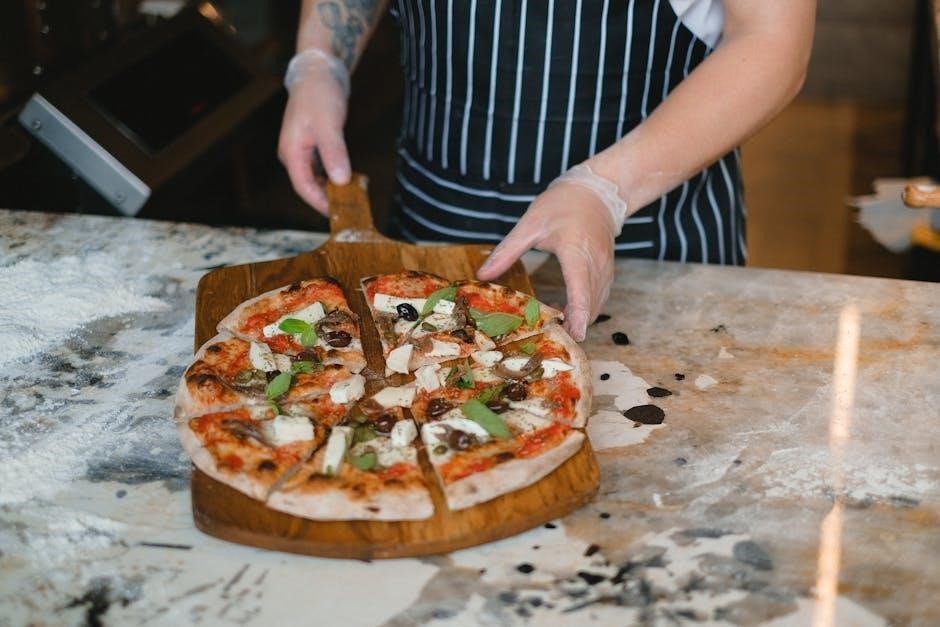
Troubleshooting Common Issues
Address sogginess by extending baking time. Fix uneven cooking by rotating the pizza. Ensure proper air circulation for consistent results and a perfectly cooked crust every time.
Preventing Sogginess
To prevent sogginess, ensure proper air circulation around the pizza. Avoid overcrowding the oven, as this can trap moisture. Place the pizza on a preheated baking sheet or pizza stone to absorb excess moisture. If using a rack, position it in the center for even heat distribution. Do not cover the pizza while baking, as this can trap steam. For extra crispiness, bake the pizza directly on the oven rack without a baking sheet. These steps will help achieve a crispy crust and prevent a soggy texture. Consistent oven temperature and proper placement are key to avoiding sogginess.
Addressing Uneven Cooking
Uneven cooking can occur due to improper pizza placement or inconsistent oven temperature. To address this, ensure the pizza is centered on the baking sheet or rack. Rotate the pizza halfway through the baking time to promote even cooking. Avoid overcrowding the oven, as this can disrupt air circulation. If using a pizza stone, preheat it thoroughly to ensure even heat distribution. Keep an eye on the pizza during the last few minutes of baking and adjust its position if necessary. Proper placement and monitoring will help achieve a uniformly cooked crust and evenly melted cheese.
By following these baking instructions, you’ll achieve a perfectly cooked Totino’s pizza every time. Enjoy experimenting with toppings and techniques for enhanced flavor!
Final Tips for Perfect Results
For the best results, ensure your oven is preheated to the recommended temperature. Place the pizza on a baking sheet or directly on the rack for even cooking. Avoid overcrowding to allow proper air circulation. Keep an eye on the pizza during the last few minutes to prevent burning. Let it cool slightly before slicing. Experimenting with toppings or baking times can enhance flavor and crispiness. Always follow package instructions for optimal outcomes and enjoy your perfectly baked Totino’s pizza.